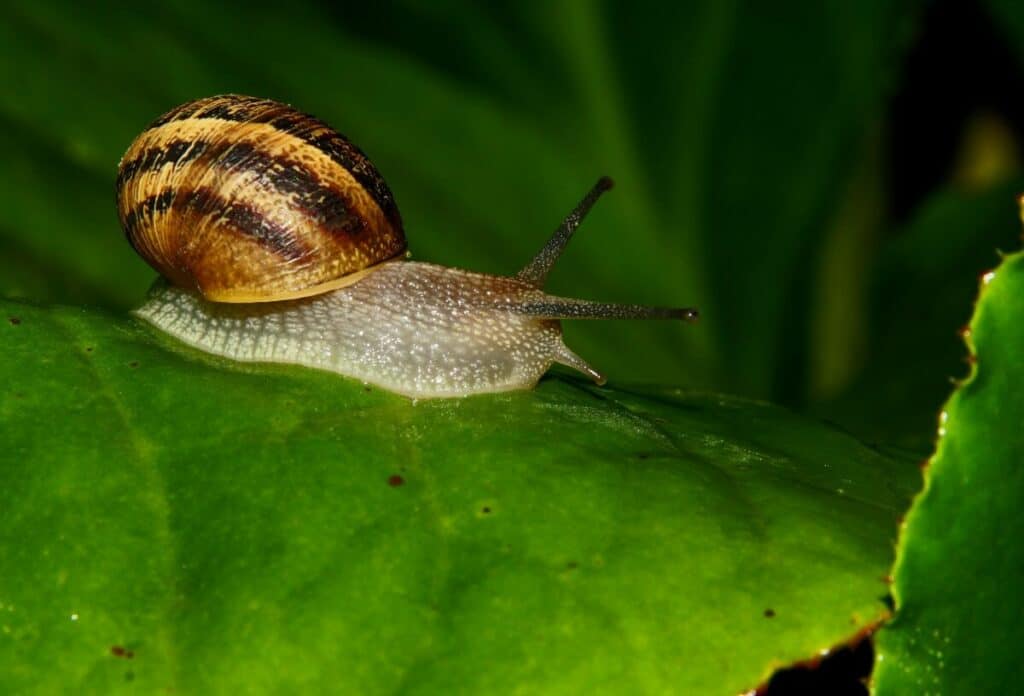Are you tired of dealing with pesky snails wreaking havoc in your garden? Look no further!
In this article, we will provide you with all the information you need to identify these slimy creatures and take back control of your plants. From describing the damage they cause to listing effective treatment methods and prevention techniques, we’ve got you covered.
What are snails?
Snails are small mollusks that have a shell and soft body. They have an elongated foot that they use to move around and two sets of tentacles for feeling and tasting their environment.
Snails mostly feed on vegetables, fruits, and other organic matter. They are found in both aquatic and terrestrial habitats all over the world.
What damage do snails cause on plants?
Snails can cause significant damage to plants by chewing on leaves, stems, and fruits. They leave behind ragged edges on leaves and can even consume entire seedlings.
Snails are particularly active during wet weather and can rapidly reproduce, making them a persistent threat to plant health.
How to identify snails on plants

Snails consume various types of plant matter, resulting in the presence of slime trails and irregular holes in leaves.
To identify snails, one can observe their slimy trails and examine the leaves for signs of chewing and irregularly shaped holes. They are active at night, and you may observe them on your plants during that time.
Read more:
How to get rid of snails
Handpick: You can handpick snails at night using a flashlight or headlamp. Place them in a container of soapy water to kill them.
Insecticidal soap: This solution kills snails by suffocating them and disrupting their cell membranes. You can safely use it on most plants and apply it directly to the affected areas..
Beneficial nematodes: Beneficial nematodes are microscopic roundworms that you can apply to the soil and will feed on snails, killing them naturally.
Snail pellets: Apply them around your plants and near areas where you have seen snails. Be sure to follow the instructions on the packaging for safe use.
Beer trap: You can use beer traps or boards to attract and capture snails. Bury a shallow container filled with beer in the garden soil and check it in the morning for trapped snails.
Read more:
How to prevent snails on plants
Row covers can be used on small plants, such as leafy greens, to prevent snails from reaching them. At a certain stage, vegetable plants may have snails present.
It is recommended to regularly monitor your plants for signs of snails, such as slime trails and chewed leaves. You can then take appropriate measures to eliminate them.
Host vegetable plants for snails
Some vegetable plants that snails like to infest include lettuce, spinach, cabbage, and other leafy greens. snails also like to feed on fruits such as strawberries and melons.
Natural predators of snails
Some natural predators of snails include hedgehogs, ground beetles, toads, and some birds. These animals feed on snails and help to keep their populations in check.
References
- https://en.wikipedia.org/wiki/Snail
- https://ipm.ucanr.edu/PMG/PESTNOTES/pn7427.html
- https://www.rhs.org.uk/biodiversity/snails

Fact Checked, Written, and Published by Kevin Rodrigues
Kevin is the founder of Gardening Mentor, a website that aims to teach people to grow their own food in a limited space. As a self-taught gardener, Kevin has spent several years growing plants and creating gardening content on the website. He is certified in Home Horticulture and Organic Gardening from Oregon State University. He has a Post Graduate Diploma in Horticulture and Landscape Gardening from Mumbai University.
Read more
